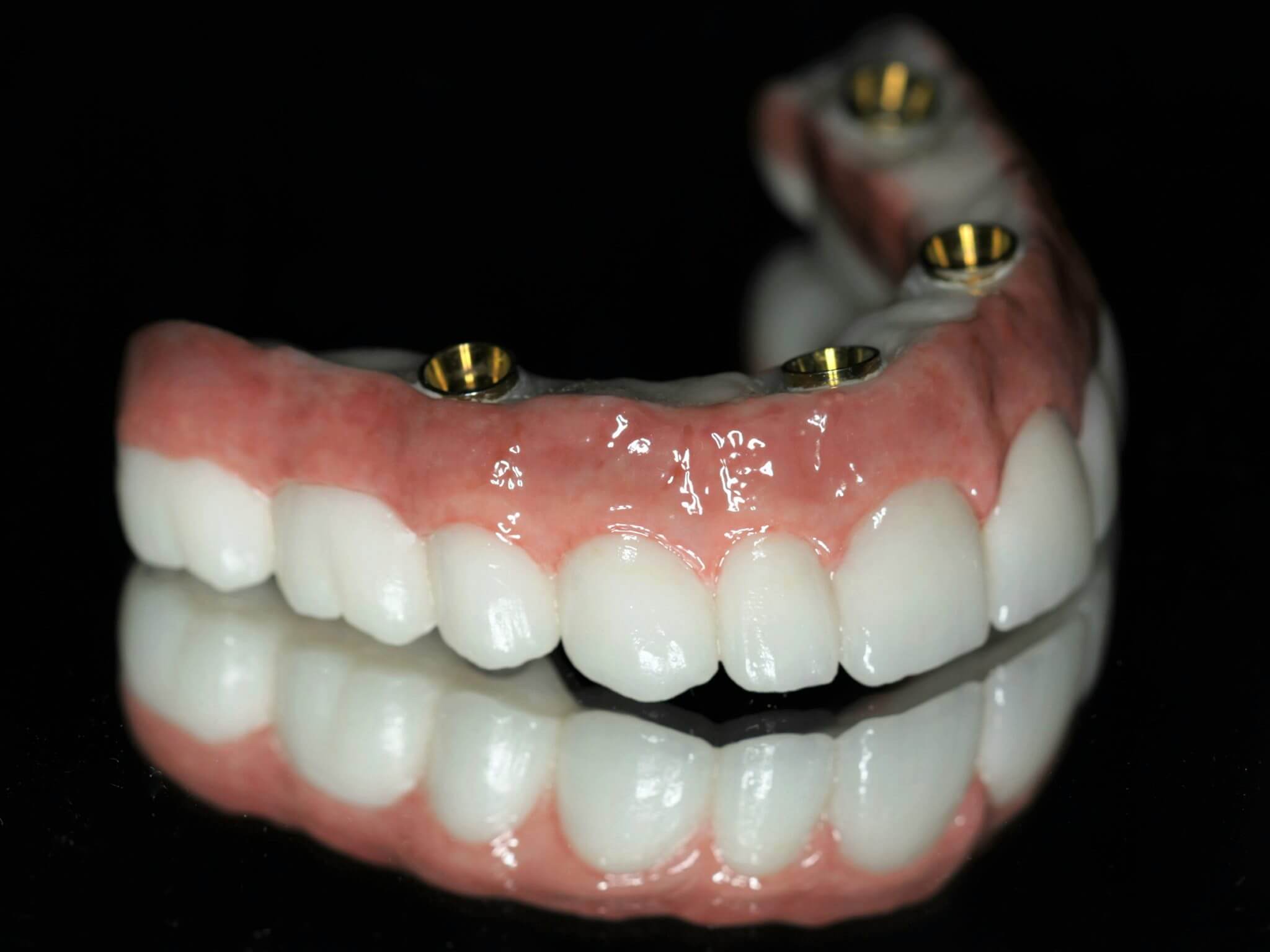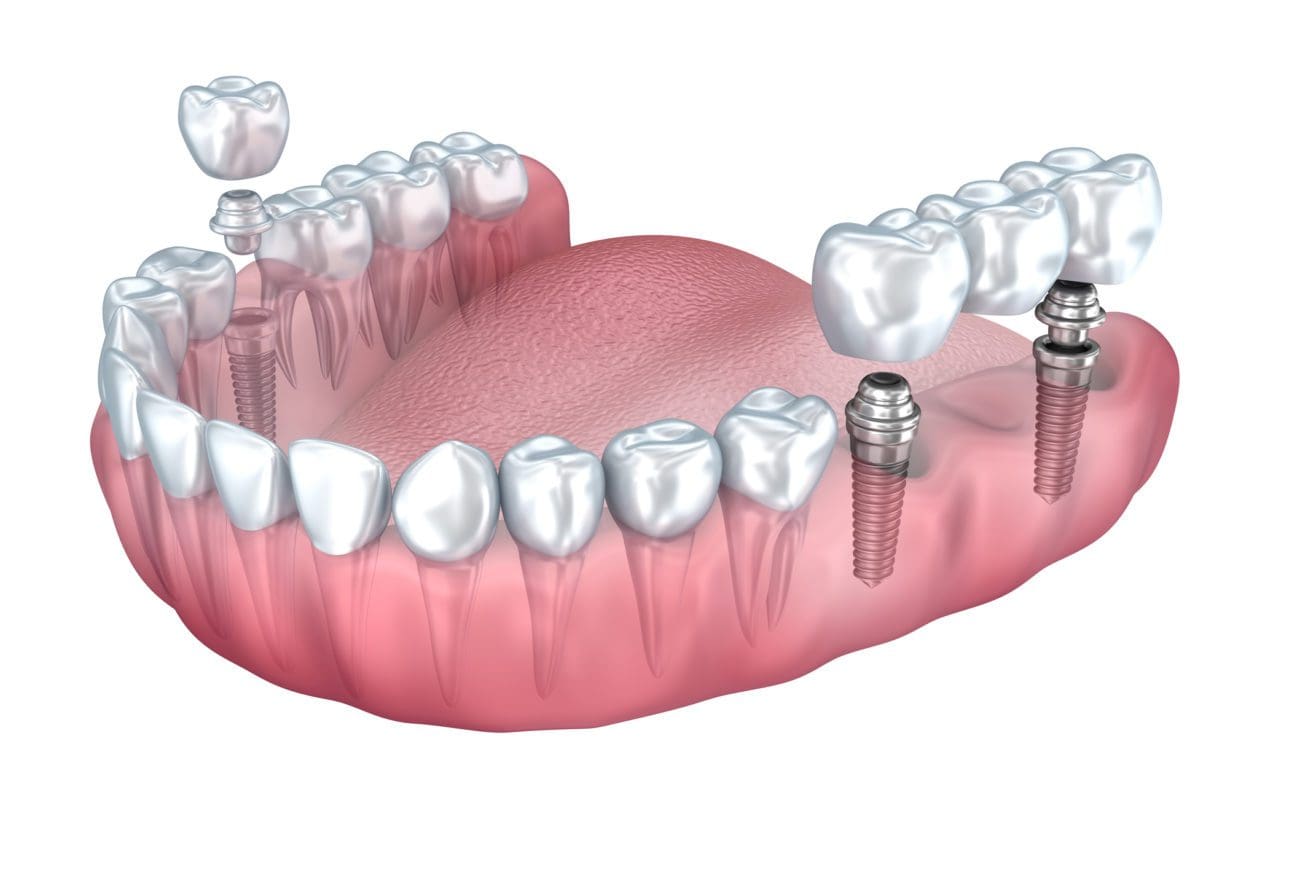Some Of Dental Sense
Some Of Dental Sense
Blog Article
Dental Sense Fundamentals Explained
Table of ContentsThe Only Guide to Dental SenseHow Dental Sense can Save You Time, Stress, and Money.Dental Sense for DummiesThe 4-Minute Rule for Dental Sense
are clinical tools operatively implanted right into the jaw to bring back a person's capacity to eat or their appearance. They offer assistance for fabricated (fake) teeth, such as crowns, bridges, or dentures. When a tooth is shed due to injury or condition, an individual can experience problems such as quick bone loss, defective speech, or adjustments to eating patterns that cause pain.Oral implant systems are composed of a dental implant body and dental implant joint and might also include a joint fixation screw. Dental veneers cost. The oral implant body is surgically put in the jawbone in place of the tooth's root. The oral implant abutment is usually affixed to the implant body by the abutment addiction screw and extends via periodontals right into the mouth to sustain the affixed artificial teeth
(https://dentalsense1.bandcamp.com/album/dental-sense)Framework of The Oral Implant System selecting dental implants, talk with your oral supplier concerning the potential benefits and risks, and whether you are a candidate for the procedure. Things to think about: Your general health and wellness is an important consider establishing whether you are a good candidate for dental implants, the length of time it will certainly require to heal, and exactly how long the implant may remain in place.
Smoking cigarettes may influence the recovery procedure and lower the long-term success of the implant. The recovery process for the implant body might take several months or longer, during which time you usually have a momentary abutment in area of the tooth. the dental implant treatment: Meticulously comply with the dental health instructions offered to you by your dental provider.
The 30-Second Trick For Dental Sense
Implant failure can lead to the need for one more surgical procedure to fix or change the implant system. Restores the capacity to eat Recovers aesthetic look Helps maintain the jawbone from shrinking due to bone loss Preserves the wellness of the surrounding bone and gums Aids keep adjacent (neighboring) teeth stable Improves high quality of life Damage to bordering natural teeth throughout dental implant positioning Injury to the surrounding tissues throughout surgical procedure, such as sinus perforation Injury throughout surgery (as an example, fracture of bordering jawbone) Inadequate function, such as seeming like the teeth do not attack together normally A feeling that the tooth hangs or twisting in area resulting from an abutment screw loosening up Implant body failure (looseness of the dental implant body) due to systemic infection, which may be most likely in clients with uncontrolled diabetes mellitus due to local infection in bone and gums supporting the dental implant body as a result of postponed healing, which might be most likely in patients who smoke Difficulty cleansing the gum tissues around the dental implant, causing inadequate dental health Neglected gum disease Post-surgical feeling numb because of nerve impingement or damages Constantly notify healthcare suppliers and imaging specialists that you have oral implants before any magnetic resonance imaging (MRI) or x-ray treatments.
FDA is not aware of any unfavorable events reported for MRI or x-ray treatments with oral implants. Dental implants systems are generally constructed from materials that comply with international consensus criteria of the International Organization for Standardization (ISO) or ASTM International. These criteria have details of what makes a secure material.

An oral implant is a structure that replaces a missing out on tooth. With screw-like devices, the cosmetic surgeon inserts an implant into the jawbone, and it acts as an anchor for a man-made tooth, called a crown.
Little Known Facts About Dental Sense.
Some individuals are not eligible for dental implant surgical procedure. It is for dental cosmetic surgeons to operate individuals with: acute illnessuncontrollable metabolic diseasebone or soft cells condition or infectionIf these problems are resolved, an individual can have the surgical treatment. In, oral specialists avoid from operating individuals with: If people with any of the above go through dental implant surgical treatment, there is a higher threat of the dental implant falling short.

Dental implant surgical treatment is a customized process. It's not the exact same for every person. Yet the adhering to gives a basic overview of what you can expect your dental professional, dental doctor, periodontist or prosthodontist to do: Position the implant operatively. Offer you time to recover. Attach the message and final crown, bridge or denture.
Next off, your cosmetic surgeon will carefully place the oral implant into your jaw. If your dental pop over to this site implant is near the front of your mouth, your dental expert will certainly make a short-term tooth for you to wear until you heal.
The Definitive Guide for Dental Sense
Your supplier can tell you what to anticipate in your scenario. During the healing phase, your jawbone must fuse to the dental implant. This procedure, called osseointegration, is critical for security and lasting success. This process can take anywhere from three to nine months. In many cases, it may take much longer.
As soon as your dental implant heals, your dental practitioner can connect the joint (small port blog post) and your final reconstruction (crown, bridge or denture). This generally takes regarding one hour to finish and may call for a second minor surgical treatment. You shouldn't feel any kind of pain throughout your oral implant procedure because your copyright will use drug to numb your gums.
Report this page